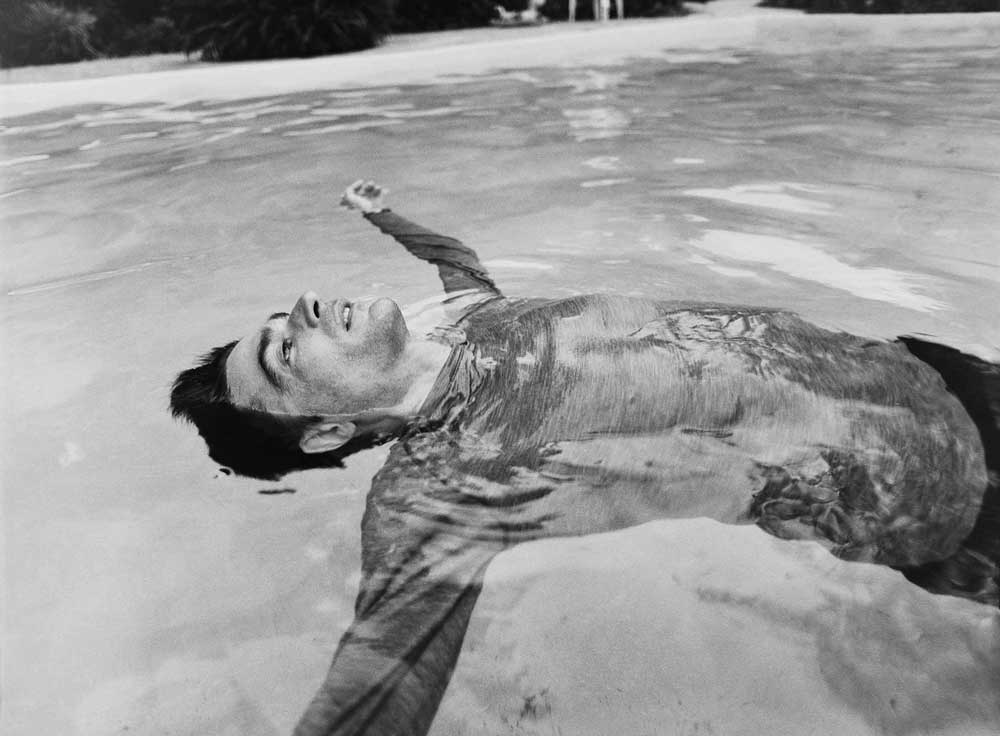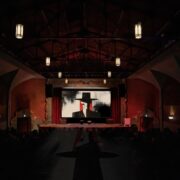We like to claim Jon Hopkins in the dance music world because he’s truly one of a kind. He is as adept at producing pop music, playing classical piano or composing film soundtracks as he his laying down devastating bass.
Born in Kingston upon Thames, England, in 1979, he is a unique polymath who started out formally studying music before turning his attention to electronic sounds after he was won over by the synths of the Pet Shop Boys and Depeche Mode.
Now deep into a hugely successful career, Hopkins continues to get better, to confound expectation and defy categorisation. Not familiar with him or his music? Right then, here are 10 reasons why he should be on your radar…

1. His Collaborations
In his earlier years, Jon Hopkins was under the mentorship of ambient overlord Brian Eno. He learnt immeasurable amounts in those sessions, chiefly that enjoying the music making process is as important – if not more so – than perfecting the technical stuff and getting bogged down in detail. “[Eno] made me a little more loose and more human in how I approached music.” He worked with Eno on a number of projects, including co-producing Coldplay’s Viva la Vida or Death and All His Friends album. He also linked with artists as diverse as Massive Attack, Herbie Hancock and King Creosote for his Bombshell album. Impressive by anyone’s standards.
2. His Award Nominations

The best-selling album of 2008, that Coldplay longplayer won Best Rock Album at the 2009 Grammy Awards. In 2019 Hopkins narrowly missed out on his own Grammy for Best Dance/Electronic Album for 2018’s Singularity longplayer, easily the most profound work of his career. He’s also been nominated for two Mercury Music Prizes and an Ivor Novello Award. Despite not picking up the final prize for any of these, even being nominated is great for the wider dance music world as his music continues to cross over, reach ever larger audiences and prove that electronic music can go beyond the club.
3. His Film Compositions
In 2009 Hopkins scored his first film, the Peter Jackson picture The Lovely Bones, with Brian Eno and Leo Abrahams. In 2010 he composed the soundtrack for British sci-fi and horror film Monsters, and also short film Rob & Valentyna in Scotland, directed by Eric Lynne, which picked up an honourable mention at the Sundance Film Festival. He also scored 2013’s Kevin Macdonald film How I Live Now. All of which found him showcase his dizzyingly wide range of skills, from meticulous and deft sound design that draws you in to big, sweeping musical landscapes that wash right over you.
4. His Singular Style
Hopkins is behind some of the more beautiful electronic albums in recent memory. Combining ambient and modern classical with downtempo and electronic influences, he effortlessly straddles scenes in beguiling, hard-to-categorise ways. His music is evocative and filled with narrative. Despite being instrumental (or synthetic) it can be as moving and emotionally stirring as any ballad or love song. He manages to pull off incredibly complex tricks and techniques, harmonies and progressions that lead to grandiose moments of musical invention that pairs driving techno with delicate pianos, but also leaves enough space in his music to really let you revel deep within it. His sound is as dynamic as anyone’s and continues to evolve.

5. His Love of Meditation
Since his 20s, Hopkins has been a student of kundalini meditation and later took up self-hypnosis. Used as ways to relax on tour and unwind at home, it’s also helped him get out of creative black spots. He has also taken up the increasingly popular Wim Hof method, a breathing technique that involves hyper-oxygenating the body, which is said to cause some big feelings of universal awareness.
6. His Gorgeous Moments of Calm
Admitting that he felt “pretty paralysed” when the Covid-19 situation first unfolded, in May, Hopkins responded with Singing Bowl (Ascension). It’s a meditation piece, using previous recordings he had made of a 100-year old singing bowl found in a Delhi antique shop.
“All my plans for the year were cancelled and everything felt so weird and dreamlike. But gradually I found I wanted to create something – to find peace and perspective through making music, as I have always done,” he said. “It felt beautifully pure to just use one acoustic sound source and no synths. There was a magic in setting this generative system in motion then just letting the vibrations of this bowl create their own world. I listened to harmonics layering on top of harmonics for hours and was transported.”
He went a step further with his 24-hour long Quiet playlist of ambient music – available on Apple Music, Deezer and Spotify – to accompany all our “inward journeys”.
7. His Spellbinding Albums

Jon Hopkins’ 2018 album Singularity muses on cosmic infinity, and the expansion and contraction of the universe. It flows through things as dense as rugged techno and psychedelic ambient, intimate piano and visceral drums and manages to be both explosive and vulnerable. Immunity, however, was his hypnotic breakthrough album that told the story of an unforgettable night and all its thrill and spills. Both are epic in different but equally accomplished ways. We’re ready for another, please.
8. His Live Shows

Hopkins doesn’t consider himself a traditional dance artist and that shows in his live sets. Whether playing the piano or an array of synths and controllers, they are immersive affairs in which he extends sections and responds to the crowd, all the while loosely sticking to the structure of the tracks fans can easily recognise.
9. His DJ Sets
If you can catch Jon Hopkins DJ, you should. He has become a fine selector who tends towards fresh and futuristic sounds within the techno realm, but always with an absorbing sense of melody and darkness. His DJ sets have won over even hard-to-impress crowds at cult places like Amsterdam’s Dekmantel Festival.
10. His Musical Chops
They say you have to know the rules in order to break them, so part of what makes Jon Hopkins so good is his formal musical skills. Aged 12 he began studying piano at the Junior Department of the Royal College of Music, in London. He stayed there until the age of 17. In that time he won enough money from music competitions to start buying his own synths. Inspired by greats like Ravel and Stravinsky, he also won a competition to perform a concert of Ravel’s Piano Concerto in G with an orchestra, and for a while considered becoming a professional pianist before being put off by the formality of the art.
Three To Try
Scene Suspended
A return to emotional neo-classical simplicity, with piano and strings and foreboding rumbles.
Luminous Spaces
A collaboration with Kelly Lee Owens whose ethereal vocals are just the beginning…
Open Eye Signal
A minimal cut with a beautifully delicate and tender atmosphere.
Main image: Sonar Barcelona











